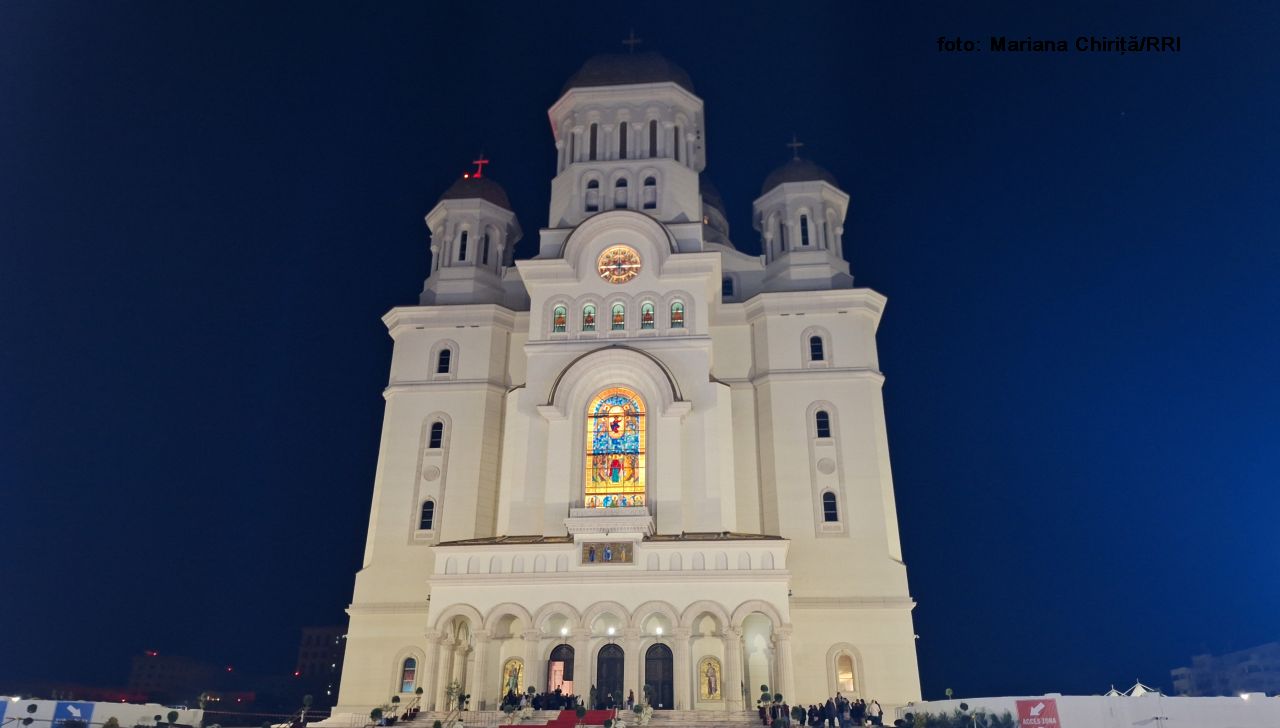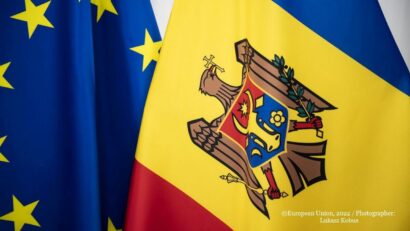Light in the city center
The National Cathedral opened its doors in Romania

Corina Cristea, 07.11.2025, 13:04
For almost three centuries, the Cathedral of Saints Peter and Paul, built in St. Petersburg by Peter the Great, was the tallest Orthodox church in the world. Until now, when, on October 26, after more than a century since the first initiatives and after 15 years of actual construction, the National Cathedral opened its doors in Romania, a country where 85% of citizens identify as Orthodox. Thousands of pilgrims, prominent clergy and dignitaries participated in Bucharest at the grand inauguration ceremony, officiated by the spiritual leader of Orthodox Christians in the world, Ecumenical Patriarch Bartholomew I, and the Patriarch of Romania, Daniel. The idea of building a national cathedral emerged after Romania gained its independence in 1877-1878, and in 1882, King Carol I promulgated the first law to build such a building. The plans were repeatedly thwarted, however, by two world wars, decades of communist rule, and a fragile transition before the country joined the EU. After 2007, the project was supported by a joint law of the state and the Romanian Patriarchate, and now the National Cathedral has become a reality. Erected in the political center of the capital, near the Palace of Parliament, it is more than a monument made of stone and marble, being a sign of continuity as a people, a place of memory and hope. The National Cathedral also represents a challenge for the future: how can this symbol be transformed into action – into support for those in need, into educational, cultural, or social projects that unite? Its architecture combines traditional Romanian elements with Byzantine and Western influences, and the tallest of its gilded domes rises 127 meters. The complex mosaics, made of stones in over 2,500 colors, cover an area of 25,000 square meters, using materials imported from Venice and Carrara. Ecumenical Patriarch Bartholomew I emphasized in his speech the spiritual and artistic value of mosaic iconography:
“In particular, the painting in the church, from the Pantocrator, in the dome, to the Virgin Mary Platytera, in the apse of the Holy Altar, together with all the saints painted on the walls and vaults, mysteriously and truly descend from Heaven to Earth. The Byzantine art of the icon and mosaic gave rise to unique and imperishable masterpieces, also preserved in Constantinople, the main center.”
The National Cathedral is dedicated to the Ascension of the Lord – Heroes’ Day and to the Holy Apostle Andrew, the First-Called, the Protector of Romania. The main spire, the Pantocrator, houses an imposing icon of Christ, 12 m in diameter, in which the face of the Savior is 4.5 m in size. At the same time, with a height of 16 m, the icon of the Mother of God Platytera is the largest representation of the Mother of God in mosaic in Romania and one of the largest in the Orthodox world. Everywhere, the mosaic gives the image an extremely dynamic character, which modifies the viewer’s sensory perception depending on the time of day or the way the light circulates and confers a state of animation, drawing the eye from one face of a saint to another. Over 200 specialists in Byzantine mosaic art worked for seven years to create the mosaics, which involve the joining of approximately 10,000 tiny tiles for each square meter. Painter Daniel Codrescu, the team coordinator, about the colors on the walls of the imposing edifice:
“The idea of light can be rendered in many ways. And this combination, of white with gold, these plays of light that one area leaves and supports another, all have a theological charge behind them, they also have a significance. The fact that we put gold only on key areas in the iconographic plan – such as Our Lady of Platytera, the Pantocrator, Our Lady of Oranta, the vaults of the apses – makes it enrich the areas next to it.”
5,000 people can fit inside the Cathedral, which houses the largest iconostasis in the world – with 45 icons, arranged in four registers – and the largest altar screen. Here we also find the largest church balanced bell, while under the esplanade the “St. Andrew’s Cave” was provided – an underground space with a capacity of 6,900 people, intended for cultural, catechetical and museum activities. For many Romanians, the National Cathedral is a symbol of identity, continuity and faith, for others it raises questions about the priorities of a society facing urgent needs related to education, health or infrastructure. The cathedral has cost, so far, approximately 270 million euros, money from donations, the contribution of the Patriarchate and public funds. Patriarch Daniel thanked in his speech all the authorities and donors who supported the construction of the cathedral:
“We thank all the benefactors and sponsors, anonymous donors and those who asked to be commemorated at the Holy Altar with their families for the support they have given, the fulfillment of this Romanian ideal, in this year full of significance, the Centenary of the Romanian Patriarchate.”
The church wanted to sanctify the paintings in the National Cathedral this year, when we celebrate 100 years since the Romanian Orthodox Church was elevated to the rank of Patriarchate. 2025 also marks 140 years since the Romanian Orthodox Church was granted the status of Autocephalous Church.






























